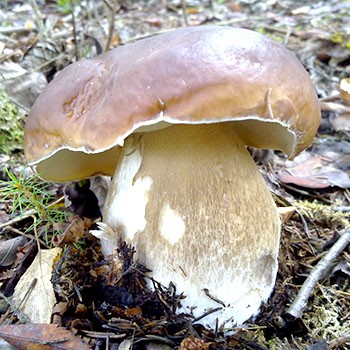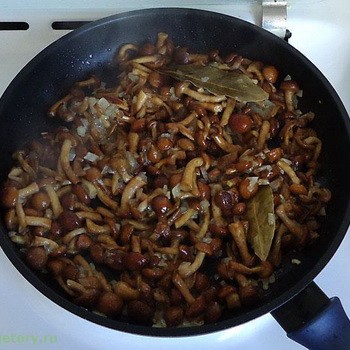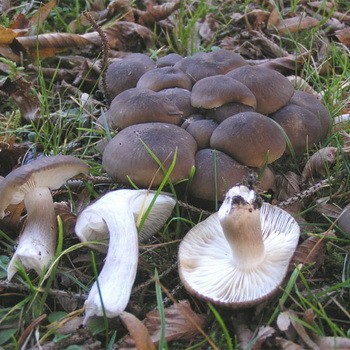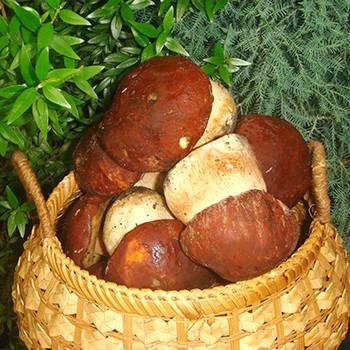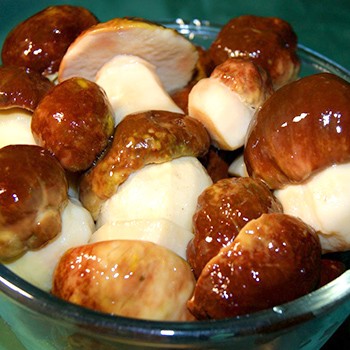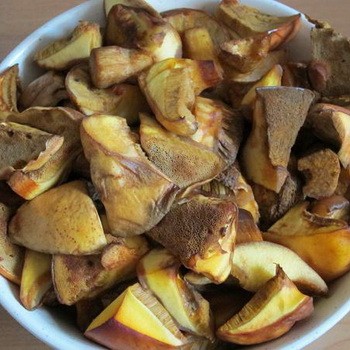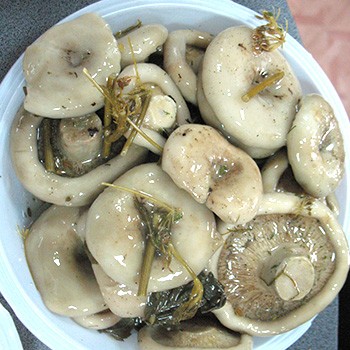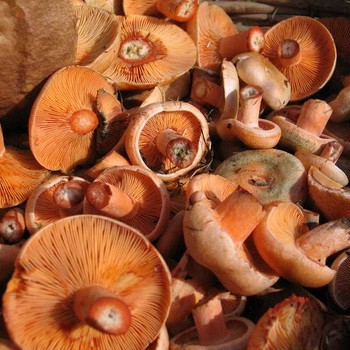How to handle mushrooms mushrooms after collection
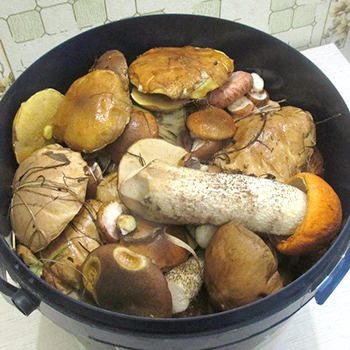
Content
How to handle dry breasts
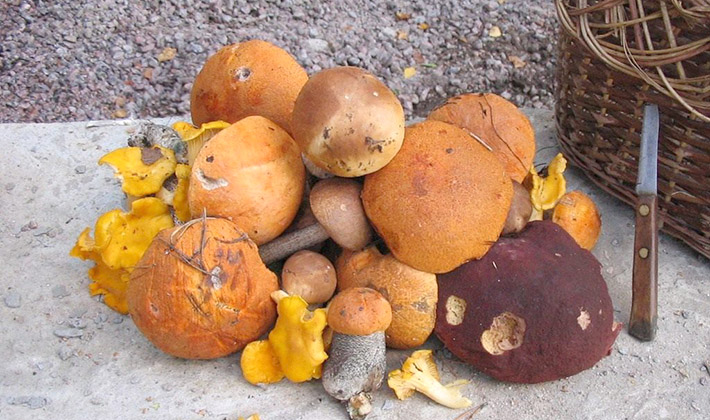
The value of the mushrooms is in flavoring and aromatic substances, which determines the widespread use of mushrooms in the manufacture of various dishes, as well as sauces and soups. It is customary to sort dried mushrooms, rinse in 3-4 waters and soak in cold water. Salted and pickled muffins are also sorted and, if necessary, cut. Salted mushrooms must be in brine before processing, otherwise their taste and appearance will deteriorate.
Before processing dry breasts, you need to soak them for swelling.
How to handle black salted mushrooms

The purpose of cooking mushrooms is to reduce or completely eliminate the bitter taste or toxicity. But it lowers the nutritional value of mushrooms and weakens their taste and aroma. Therefore, mushrooms should be used whenever possible without prior heat treatment. Before processing the mushrooms for salting, they are boiled for 15-30 minutes in a large amount of water. The broth is poured. There are two ways: bring the water to a boil (add 1 tablespoon of salt per 1 liter of water), dip the mushrooms in boiling water, stand for 5-15 minutes and transfer to cold water. Or, the mushrooms are dipped in cold salted water, quickly brought to a boil. After boiling, the dishes are removed from the heat and allowed the mushrooms to cool in the same water or pour clean water. After the water is drained, the mushrooms are transferred to a cloth bag or to a sieve to glass the water. Before treating black breasts, remember that you should not dry them by squeezing them out, many valuable substances are removed.
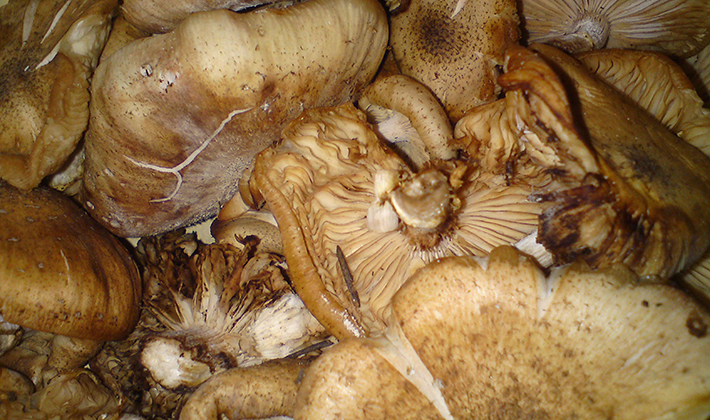 This is necessary to maintain integrity and elasticity during the cold method of pickling and pickling. The washed mushrooms are thrown onto a sieve and poured with boiling water, dipped in boiling water for several minutes or kept over hot steam. After this, the mushrooms become more elastic and do not break.
This is necessary to maintain integrity and elasticity during the cold method of pickling and pickling. The washed mushrooms are thrown onto a sieve and poured with boiling water, dipped in boiling water for several minutes or kept over hot steam. After this, the mushrooms become more elastic and do not break.
How to handle white breast before drying
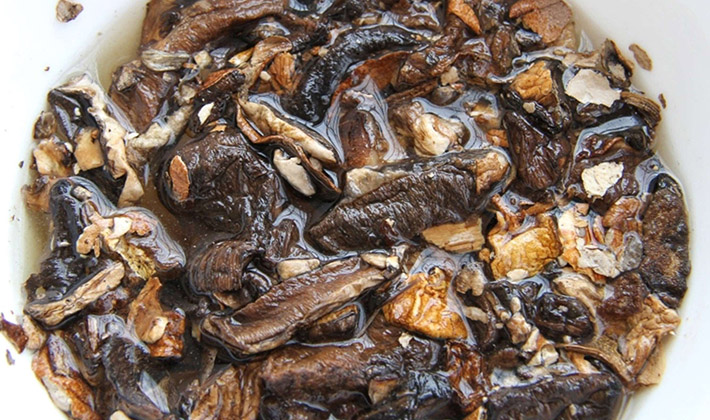
Before processing the white lump before drying, you need to remove all forest debris and sort the raw materials by size.Mushrooms do not wash before drying. Common to all drying methods is the rule in which mushrooms are dried for 2-3 hours at a temperature of + 40-50 ° C to evaporate the bulk of the moisture. Then the mushrooms are dried at a temperature of + 70–80 ° C. Mushrooms dried for several hours are dried in the sun. It is impossible to dry them in the ovens, as they easily burn out. Mushrooms should be dry to the touch, bend slightly and break easily. The top of the hat is yellowish or brown in different shades: dark brown for white breasts and from yellow-brown to black in black. Dried mushrooms are stored in dry, well-ventilated rooms, on racks in packed form or suspended in bundles. It is unacceptable to store dried mushrooms in conjunction with salted and pickled, with odorous herbs and wet foods. If the mushrooms are damp or moldy, they must be sorted and dried, removing the damaged ones.
Collection and processing of mushrooms
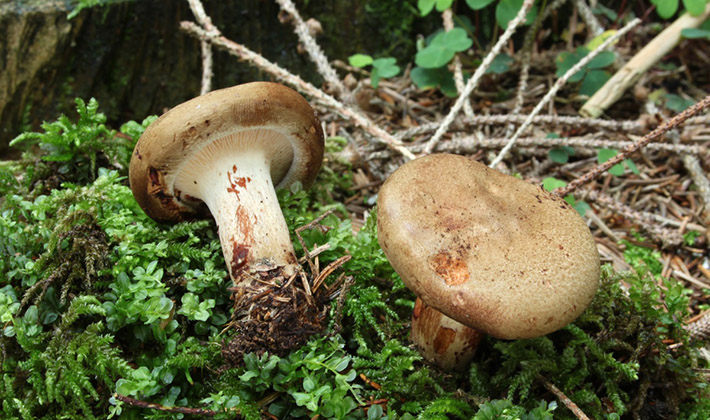
The collection and processing of breasts should be carried out on the same day, since fresh mushrooms are not subject to long-term storage due to the large percentage of water that they contain. A few days after harvesting, the mushrooms fade, lose their freshness and juiciness and become unfit for consumption. Therefore, mushrooms should be used only after several hours after collection for consumption after suitable heat treatment or their processing into resistant foods, i.e., canned. Processing mushrooms mushrooms begins with the selection of a suitable method for subsequent culinary processing. At home, mushrooms are harvested for future use by drying, pickling, salting and canning in hermetically sealed glass jars. When mushrooms are dried, up to 76% of the available water is removed from them. The remaining moisture for the development of microorganisms is not enough, which leads to their death. When preparing natural canned food, the microflora is killed by the high temperature at which canned food is sterilized. When pickling, the vital activity of microorganisms is suppressed by high temperature during cooking, and then by the action of acetic acid and sodium chloride. When mushrooms are salted, fermentation occurs, during which the sugars pass into lactic acid. The latter, along with table salt, is a preservative.
Safe handling of dry breasts

At home, when harvesting mushrooms for the future (salting, pickling, pickling, etc.), you must strictly follow the rule - do not close the mushrooms hermetically.
Safe handling of dried mushrooms is a prolonged soaking in several waters in order to remove all possible toxins and poisons.
Air must be in the dishes with mushrooms, otherwise they can cause a serious illness - botulism, which, according to medical statistics, in 60% of cases leads to death. It has been established that the toxins secreted by the bacillus (bacillus), botulinus, cause the disease.
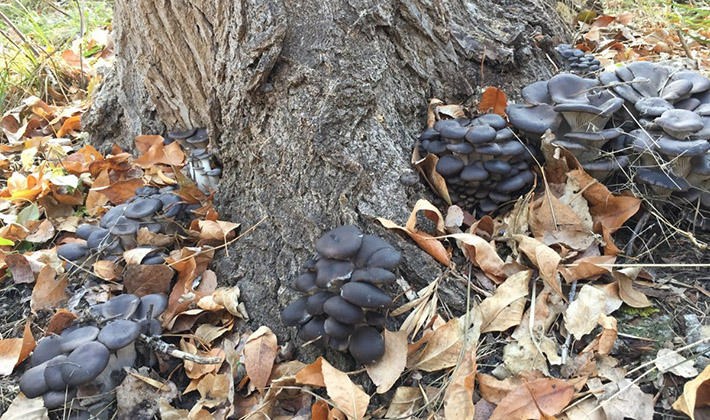 This microbe develops and multiplies in an environment where air is completely absent. The main source of infection is soil. Consequently, the mushrooms in contact with it, and often immersed in it, are one of the most potentially dangerous carriers of spores and sticks of botulism. Moreover, the causative agent of the disease can be found in soil particles, on the surface of mushroom caps, below, between the plates, and on the legs, especially in the lower part.
This microbe develops and multiplies in an environment where air is completely absent. The main source of infection is soil. Consequently, the mushrooms in contact with it, and often immersed in it, are one of the most potentially dangerous carriers of spores and sticks of botulism. Moreover, the causative agent of the disease can be found in soil particles, on the surface of mushroom caps, below, between the plates, and on the legs, especially in the lower part.
Therefore, cutting mushrooms in the forest, rather than tearing them up, the picker thus carries out the first preventive measure against the occurrence of the disease, as he leaves the lower, most contaminated soil part in place (and at the same time protects the mycelium from destruction of the mycelium).
Processing of black cargo before pickling
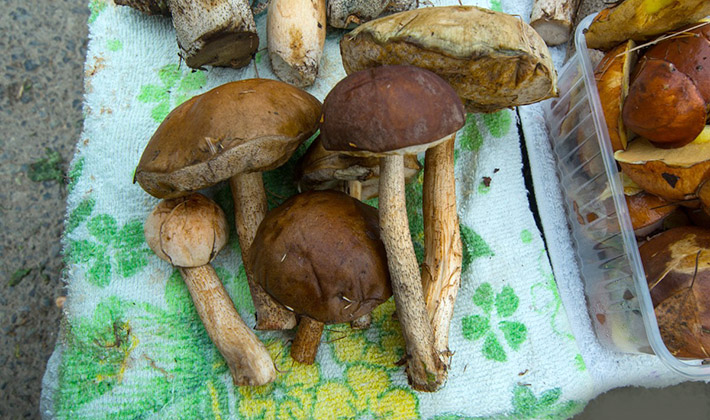
When processing black loafs before pickling, you should very carefully remove the soil, adhering leaves, grass blades, various debris, etc. Mushrooms are washed (except for those intended for drying), changing water several times in order to clear them of the earth as best as possible.Despite this, spore and botulinum bacilli getting into mushrooms harvested for future use is not excluded, which is especially important for lovers to keep this product in hermetically sealed containers, in jars that are sealed (rolled up) with metal lids or glass with “locks”.
No homemade treatment of breasts before salting and sterilization prevents the poisoning of botulinum poison, since its spores die at a temperature not lower than 120-125 ° C, which can only be achieved in autoclaves at industrial food enterprises, although the toxin itself is destroyed by boiling.
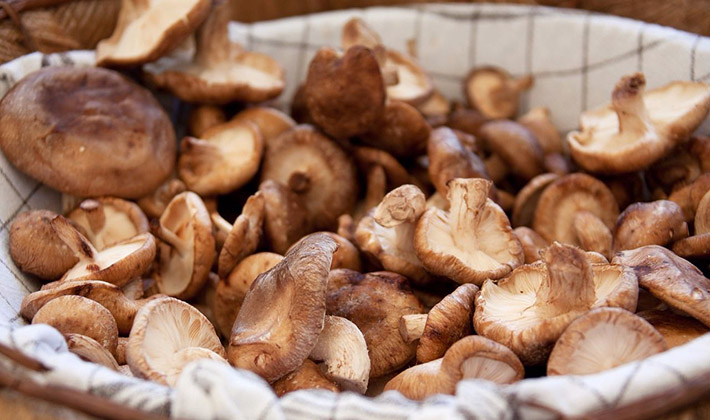 Meanwhile, at home, often, along with salting, pickling, pickling, mushrooms canned fried, stewed in their own juice, as well as boiled in slightly salted or acidified (citric acid, vinegar) water, after which the banks are rolled up.
Meanwhile, at home, often, along with salting, pickling, pickling, mushrooms canned fried, stewed in their own juice, as well as boiled in slightly salted or acidified (citric acid, vinegar) water, after which the banks are rolled up.
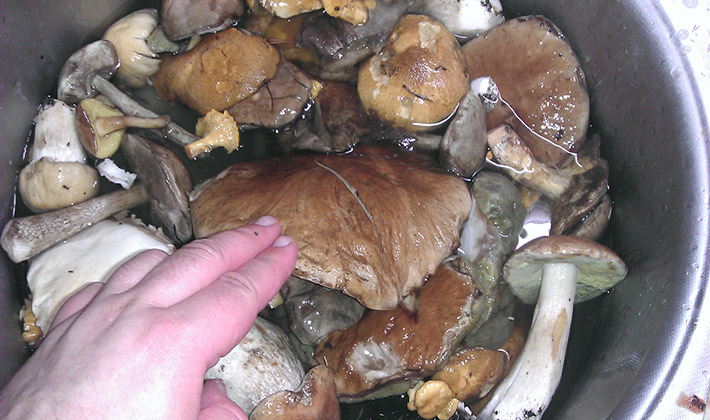 In such cases, it is necessary to sterilize the cans at least before rolling in boiling salted water (400 g of salt per 1 liter of water), since its boiling point is above 100 ° C. Such canned food immediately before use must be boiled for at least 30 minutes, counting from the moment of boiling. To do this, mushrooms, along with the broth, are laid out of the cans in a pan, a little cold water is poured (on boiling) and put on fire.
In such cases, it is necessary to sterilize the cans at least before rolling in boiling salted water (400 g of salt per 1 liter of water), since its boiling point is above 100 ° C. Such canned food immediately before use must be boiled for at least 30 minutes, counting from the moment of boiling. To do this, mushrooms, along with the broth, are laid out of the cans in a pan, a little cold water is poured (on boiling) and put on fire.
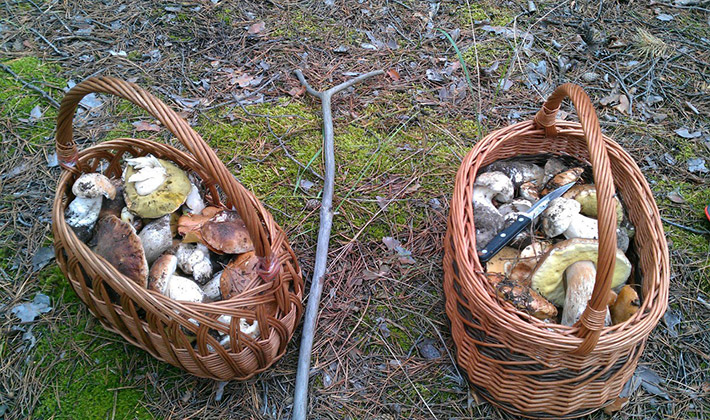 After 25 minutes boiling (not earlier), mushrooms and broth can be tasted. During this time, botulinum toxin, if any, is already being destroyed. With a lack of salt, the mushrooms are added, with an excess, water is added. If necessary, the broth is acidified and spices are added to it - bay leaves, dill, allspice. After boiling after this for another 5 minutes, the mushrooms are cooled and served on the table. They can be stored in the refrigerator for no more than 2 days. This method of processing canned mushrooms is approved by microbiologists and sanitary doctors.
After 25 minutes boiling (not earlier), mushrooms and broth can be tasted. During this time, botulinum toxin, if any, is already being destroyed. With a lack of salt, the mushrooms are added, with an excess, water is added. If necessary, the broth is acidified and spices are added to it - bay leaves, dill, allspice. After boiling after this for another 5 minutes, the mushrooms are cooled and served on the table. They can be stored in the refrigerator for no more than 2 days. This method of processing canned mushrooms is approved by microbiologists and sanitary doctors.
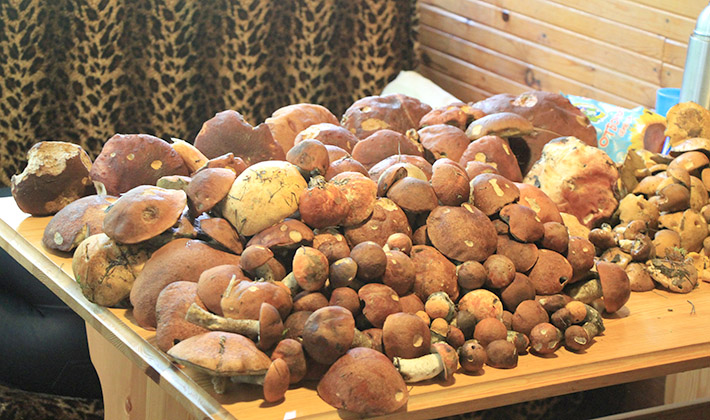 Nevertheless, homemade hermetic capping of mushrooms is undesirable. It may be acceptable for pickled mushrooms, and in the only case: when the acidity of the marinade is not lower than 1.6%. In such an environment, there is no development of spores and reproduction of botulism rods, and consequently, the formation of dangerous botulinum toxin.
Nevertheless, homemade hermetic capping of mushrooms is undesirable. It may be acceptable for pickled mushrooms, and in the only case: when the acidity of the marinade is not lower than 1.6%. In such an environment, there is no development of spores and reproduction of botulism rods, and consequently, the formation of dangerous botulinum toxin.
Salted mushrooms should be stored only in free air. Jars with pickled and salted mushrooms do not roll up metal lids - this can lead to the development of the botulinus microbe. It is enough to cover the jar with two sheets of paper - simple and waxed, tie it tightly and put in a cool place.
First aid for botulism

Botulism leads to general poisoning of the body, the disease develops very quickly. A few hours after eating food containing toxin, weakness, dizziness, loss of visual acuity occur. A person suffers from pain in the stomach, he becomes ill. The victim should be urgently taken to the hospital. And as first aid, you should take the most vigorous washing of the stomach and intestines with a 5% solution of drinking soda, apply radical laxatives and enemas. To avoid this serious illness, you must adhere to one more rule: do not buy salted or pickled mushrooms on the market from private merchants. Only self-made mushrooms should be eaten when there is complete confidence that they are all edible, carefully processed, salted or pickled in accordance with preventive measures against botulism, stored in appropriate conditions and with systematic care (removing mold, digesting marinades if necessary, etc.) . P.).
Watch how to process the mushrooms in the video, which contains the advice of experienced chefs on how to cook mushrooms.
